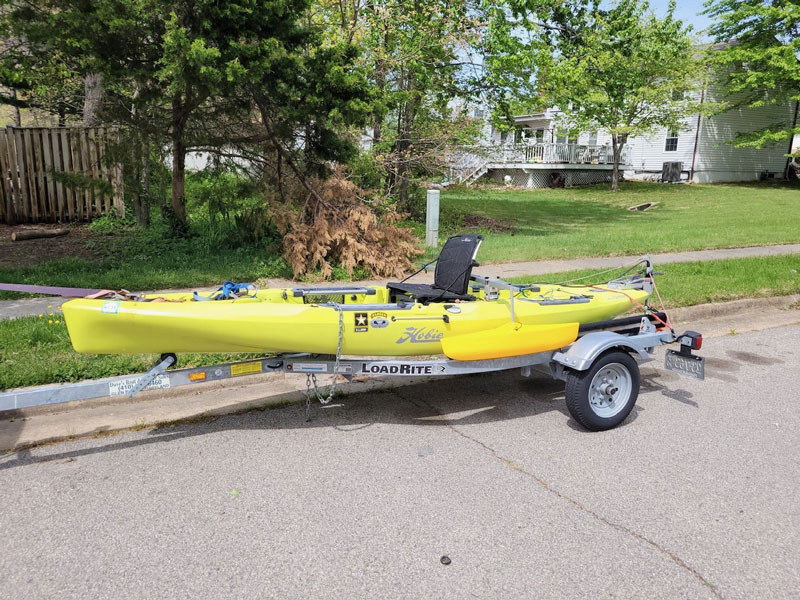If you enjoy kayak fishing you can load that kayak on top of your car or shove it into the back of a pickup truck, drive to a location for the day, then drag it down to the water. But today, with their larger designs and all the additional kayak gear you may want, many fishing kayaks are significantly heavier than one might expect. That can make loading and unloading a serious chore. So, how do you get your boat to the water with less work? You may want to trailer it.

I personally don’t own or use a trailer to haul my kayak. I have a small pickup and the tailgate is relatively low, so loading it up is super easy. So I asked three fishing buddies of mine who use trailers, Mike, Beth, and Sam, if they could give me a few pros and cons of using a kayak trailer.
The Pros of Kayak Trailers
Mike says that owning a kayak trailer is a huge pro. “I keep my kayak stored on the trailer. When I get home I unhook it, give a quick wash down, and roll it into the garage. Next trip I roll it out and can be on the road in a couple of minutes. As I’ve gotten older, I also appreciate the convenience of the low lift it takes to get it back on the trailer.”
Beth agrees, saying “We have a homemade kayak trailer converted from an old motorcycle trailer. The definite pro is ease of loading/unloading/tying down. We don’t have to lift it into the bed of the truck or onto racks.”
And Sam adds “If you have a heavy, wide, and burdensome kayak like mine, with a motor like a boat, before I got the trailer it was a *#@&% to hoist it up on the roof rack by myself. It does render the convenience and practicality of launching like a regular watercraft. My suggestion is to obtain the smallest and most lightweight trailer possible.”
Kayak Trailer Cons
“The obvious negative is the lack of access at small launches that don’t have room for trailers, or where the distance from parking to the launch would require a kayak cart or the like,” says Mike. “There are also maintenance costs for the trailer, like getting the hubs greased every couple of years.”
Sam said his cons are “the extra financial expenditure and maintenance of owning one, and property tax in Virginia where I live. Maintenance, too, I've had to replace the axle once already in the four years I've had mine. And you will have electrical problems (with the lights) as well. Also, it does increase the wear and tear on your transmission, depending on the weight of the trailer.”
A final con, from Beth: “Having to get it registered and finding a place to park it.”
If you decide that you want a trailer, most cost from around $1000 to a little over $2000. Or, you can do a DIY project like Beth and her husband put together. If you want to launch directly into the briny Chesapeake waters and will be dunking the trailer be sure to choose galvanized or aluminum construction. And Sam adds one last suggestion: “If you don't have experience driving with a trailer, go practice in a parking lot. And remember to negotiate your turns with half the vehicle length ahead first or you’ll be jumping or clipping the curb.”
-By Eric Packard